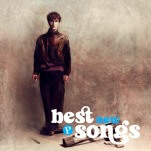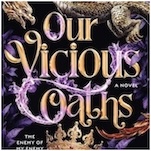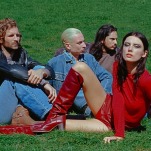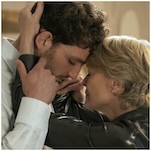The Drive-By Truckers’ Athens Beginnings: An Exclusive Excerpt from Where the Devil Don’t Stay
New Biography by Stephen Deusner Out Next Week

On Sept. 7, Texas University Press will publish Stephen Deusner’s biography of the Drive-by Truckers, ‘Where the Devil Don’t Stay.’ You can read an exclusive excerpt on Patterson Hood’s early days in Athens, Ga., below.
Near the corner of Clayton and Jackson—spitting distance from the University of Georgia campus—the High Hat was a townie drinking establishment nestled among the frat bars and greasy pizza joints in what passed for a sketchy neighborhood in Athens. Most nights during the late 1990s, but especially on weekends, the street would fill up with rowdy, intoxicated bros, a throng sometimes resembling a riot flowing out of open doors, blocking cars, and clogging traffic. It was only half a mile from the west side of downtown, where the Caledonia Lounge and the 40 Watt anchored an artsier district that was quieter, less crowded, less rowdy, and less Greek, but some nights the High Hat could feel like it was in a different place altogether.
Home to legendary bands like the B-52’s, Pylon, R.E.M., Widespread Panic, and Neutral Milk Hotel, among many, many, many others, Athens has always enjoyed a diverse music scene, never defined exclusively by one particular sound or style but united in a like-minded approach to music-making that values freedom and invention. Psych-pop bands rub elbows with hardcore punks jostling for stage time with country-rock outfits sharing equipment with jangly guitar groups sharing members with noodly jam bands hackeysacking with reggae artists. Blues, however, has not historically been among the most popular local styles, partly because that first wave of house party bands sprang up almost in opposition to the blustery, blues-rock machismo of the 1970s. At the time of the High Hat’s opening in 1994, you could have counted the number of local blues acts on one hand and still had plenty of digits left over to strum a guitar.
Opening a blues club might have seemed like folly, but a very Athens sort of folly. The scene is built on a philosophy of accommodation: if you make something you truly care about, it’s likely someone else will show up to see it, even if it’s just your friends. Perhaps that made it seem like a sustainable enterprise, location be damned. The High Hat struggled, often dead even on show nights. Gradually, the owners—Drew Alston and Tony Eubanks—expanded the club’s purview to include a wider array of popular styles that might actually entice people to brave the bros and pay the meager cover charge. They started getting smaller touring acts, bands too new or too obscure or too esoteric to fill the 40 Watt. By nobody’s plan, the High Hat became something like a hub for what in the mid-1990s was becoming known as alt-country, insurgent country, or—if you prefer puns—y’allternative. This focus put the High Hat slightly ahead of the curve: while groups like the Jayhawks and the Bottle Rockets were already defining the movement, the genre’s bible—a magazine titled No Depression in a nod both to Uncle Tupelo’s 1990 debut and to the Carter Family’s signature song—wouldn’t hang out its shingle until 1995.
When Patterson moved to Athens, Georgia, on April 1, 1994, he was still licking his wounds from that disastrous stopover in Memphis and a few years in the wilderness: Auburn for a little while, then back to the Shoals, neither place doing much to curb his suicidal thoughts. Actually, he had intended to land in Atlanta, where there was a burgeoning scene of musicians mixing country and punk in the Cabbagetown neighborhood, known among themselves as the Redneck Underground: bands included the Vidalias, Jennie B. and the Speedbillies, Slim Chance and the Convicts, the Blacktop Rockets, and the Diggers. When he visited a friend in Athens, however, he got immediately drunk on the spirit of this college town and its weird history. A music boomtown as improbable as the Shoals, Athens was home to R.E.M., a band he had counted among his favorites ever since he hand-sold copies of Murmur at the Record Bar back in Florence. Besides, the rent was cheaper and the environment a lot less Memphis and a lot more Shoals. After moving into a place on Ruth Street, not far from the Oconee, which he was dismayed to discover was a mere creek compared to the Tennessee River, he found a job at a restaurant (his first of many gigs in food services), and he set about embedding himself in the local scene. He wrote songs, played a few gigs at a burrito place called Frijolero’s, and even recorded a lo-fi album on a boombox in his apartment, calling it Murdering Oscar (And Other Love Songs), and giving the cassette away to new friends.
Patterson’s first solo show at the High Hat went well enough that Alston invited him to play again. “I was so stupid and ignorant about how things worked in clubland—it’s not like Adam’s House Cat ever got that many club gigs—that I called him on a Saturday night to follow up about booking. He was like, ‘I don’t have time to talk right now. The sound guy didn’t show up, and I’m in the weeds trying to soundcheck a band.’” Patterson sensed an opportunity. “I told him I was a sound guy, which was totally a lie. I sorta knew how to do the basics of it, because we’d had a PA in our practice space. But I’d never done sound for a band.” So he bluffed. How hard could it be?
Plenty hard, it turns out, because the building wasn’t really designed to serve as a club. Let’s say you survived the murder of bros on the side walks, paid the cover charge and had your hand stamped, and maybe recognized the local musician Kevin Sweeney or Nick Bielli working the door. You then walked down a long tunnel into the venue proper. A bar ran the length of one wall, crammed with drinkers. In the opposite corner was a cramped, diagonal stage that barely fit the full bands playing that night. For a while the original sign from Tyrone’s OC hung over the stage, a nod to Athens’ glory days in the late 1970s and early ’80s and to the club that hosted early shows by Pylon and R.E.M. and Love Tractor. Next to the stage, a staircase led up to a tiny mezzanine holding four or five tables and a door leading to the manager’s office. A thick cloud of cigarette and pot smoke pushed at the ceiling. It was an odd space, logistically and acoustically, made all the more awkward by the placement of the soundboard up in a crow’s nest, separate from the mezzanine and accessible only by a rickety ladder.
“It was a nightmare because it sounded totally different up there than it did on the floor,” says Patterson. “I had just enough sense to learn pretty quickly that I had to set the levels, then climb down the ladder and listen on the floor. Then I’d go back up and tweak it. I was up and down that ladder all night, and I got really skinny.”
 He was as shocked as anybody else that his first night running sound at the High Hat wasn’t a complete disaster. In fact, he was hired for full-time work that night, despite Eubanks’s initial suspicions about the stranger in the crow’s nest. It was Tony who invited Patterson to work a regular Tuesday night gig by a local pickup group called the Hot Burritos, whose Gram Parsons-derived band name hinted at the style of music they played. Tuesday nights were given over to a cosmic, toke happy strain of country music performed by a quartet of acoustic strummers including William Tonks and future Trucker Barry Sell. They would play their own set first, then come back for a second set fronted by a guest artist—usually locals, but sometimes someone from Atlanta or beyond. Vic Chesnutt did a Hot Burrito night. So did Kelly Hogan, Anne Richmond Boston from the Swimming Pool Q’s, Greg Reece from Redneck Greece Deluxe, Ben Reynolds from the Chickasaw Mud Puppies, Andy Pike from the Continentals, Mike Mills from R.E.M., and Gregory Dean Smalley, who you’ll read more about later. “It was a who’s who of the southeastern Americana set,” says Patterson, “and we all became buds.”
He was as shocked as anybody else that his first night running sound at the High Hat wasn’t a complete disaster. In fact, he was hired for full-time work that night, despite Eubanks’s initial suspicions about the stranger in the crow’s nest. It was Tony who invited Patterson to work a regular Tuesday night gig by a local pickup group called the Hot Burritos, whose Gram Parsons-derived band name hinted at the style of music they played. Tuesday nights were given over to a cosmic, toke happy strain of country music performed by a quartet of acoustic strummers including William Tonks and future Trucker Barry Sell. They would play their own set first, then come back for a second set fronted by a guest artist—usually locals, but sometimes someone from Atlanta or beyond. Vic Chesnutt did a Hot Burrito night. So did Kelly Hogan, Anne Richmond Boston from the Swimming Pool Q’s, Greg Reece from Redneck Greece Deluxe, Ben Reynolds from the Chickasaw Mud Puppies, Andy Pike from the Continentals, Mike Mills from R.E.M., and Gregory Dean Smalley, who you’ll read more about later. “It was a who’s who of the southeastern Americana set,” says Patterson, “and we all became buds.”
-

-

-

-

-

-

-

-

-

-

-

-

-

-

-

-

-

-

-

-

-

-

-

-

-

-

-

-

-

-

-

-

-

-

-

-

-

-

-

-








































